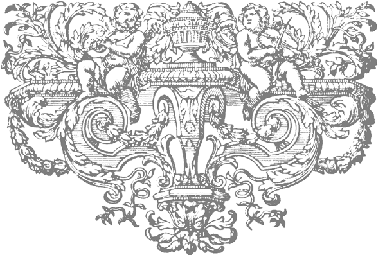Franco-Flemish double-manual harpsichord,
![]()
The case decoration of the Franco-Flemish harpsichord

These photographs shows a comparison of the appearance of the Franco-Flemish harpsichord before (left) and after the dark varnish covering all of the instrument except for the stand was cleaned and removed (right).
One of the prime reasons for restoring this instrument was to halt the darkening of the varnish covering over most of the instrument. This seemed to be a typical Victorian or Edwardian linseed-oil varnish probably made using linseed oil and turpentine. With time the huge complicated molecules making up the linseed oil had cross-linked badly forming a solid mass that gradually darkened, gradually becoming less and less soluble, and gradually becoming more and more attached to its substrate (in this case the gold and the oil paint decorating the outside of the case) at the molecular level. It was felt to be urgent to halt this processes which had been ongoing in the varnish for about 100 years, and from developing any further by removing it.
The varnish seems to have been added by Arnold Dolmetsch when he owned the instrument sometime in the early twentieth century. It is very similar to the varnish used on other Dolmetsch 'restorations' and in particular on the soundboard of the 1764/83 Goermans-Taskin harpsichord in the Russell Collection at the University of Edinburgh which I restored in the 1980's.
The difference between the colour of the gold and the paint on the gold is striking in the photographs above. Many who saw the instrument before the varnish was removed said that the paintwork looked like it was covered in a brown gravy. The soundboard was also varnished in a thick layer of linseed-oil varnish. This seemed to have been applied very irregularly over the surface in a very amateurish way as it was very thickly applied in places and very thinly in others, but in a random manner. To avoid the use of any of the standard organic solvents normally used to remove varnish which might have affected the acoustics of the soundboard, the varnish was instead removed from the soundboard mechanically. Where the varnish was thickly applied it was possible to remove it by carefully sliding a scalpel blade under the varnish almost without touching the soundboard, and then pulling it up off the surface of the soundboard in sheets. Sometimes the varnish came away in small pieces in those places where it had been thinly applied, but often it came away in sheets as large as 10cm by 10 cm. This left the soundboard with a fuzzy, mottled surface that was softened quickly with purified white spirits which evaporated immediately, and then coated lightly with MS2A picture varnish.
Unfortunately the coating of linseed-oil varnish on the case and lid had cross-linked and hardened to an extreme degree, sometimes having cross-linked on a molecular scale with the oil medium used in the decoration carried out in 1750. So the process of removing the varnish sometimes resulted in considerable losses of the underlying paint and of the base layer of gold-leaf. It does not need to be added here that the modern treatment and varnishing of the paintwork and gilding has all been isolated from the original base layer of gold and paint, with any retouching done with media that remain both soluble and transparent with time. The final layer of protective varnish was done with MS2A resin which is known not to discolour and cross-link, and also to remain soluble in the long term.
